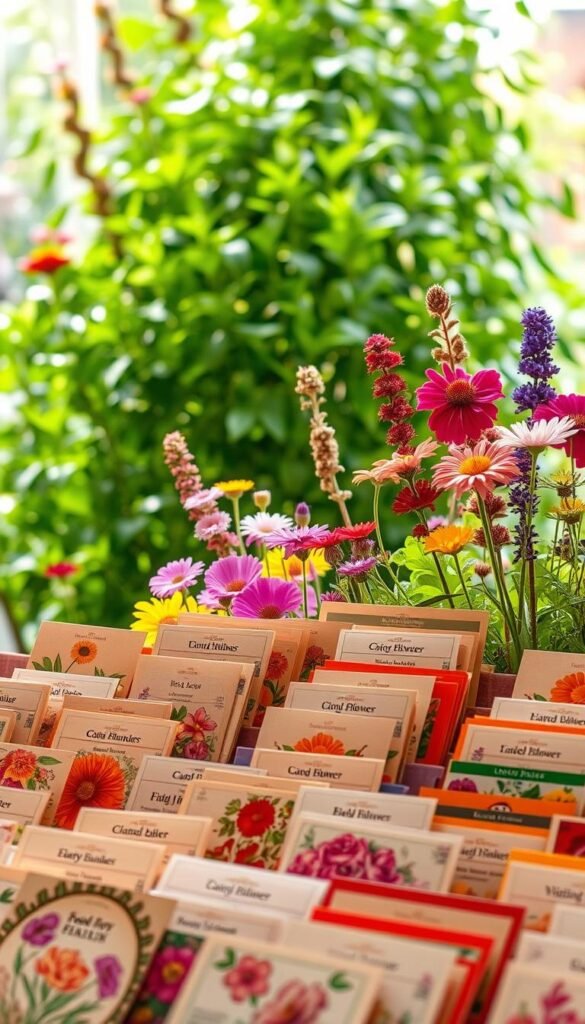Creating a lively outdoor space teeming with color and life starts with nature’s own blueprint. More homeowners are embracing native blooms to craft sustainable habitats that attract butterflies, bees, and birds. These resilient plants thrive in local conditions, requiring less water and care than traditional lawns while boosting biodiversity.
Starting your project begins with understanding your environment. Your region’s climate and soil type determine which seeds will flourish. For example, drought-tolerant varieties work well in arid zones, while moisture-loving species suit humid areas. Matching species to your landscape ensures healthier growth and reduces maintenance.
Choosing between native and non-native options impacts your garden’s ecological role. Local varieties often support pollinators better and adapt faster to seasonal changes. We’ll show you how to balance aesthetics with environmental benefits, whether you’re designing a small border or a meadow-like expanse.
With thoughtful planning, even beginners can achieve stunning results. Proper soil preparation and strategic seeding lay the groundwork for years of blooms. Best of all, this approach costs far less than high-maintenance landscaping—letting you invest in beauty that gives back to the earth.
Understanding Your Wildflower Garden Vision
Your garden’s success starts by defining its role in your local ecosystem. Whether you want buzzing pollinators, a low-care oasis, or seasonal color, clarity shapes every decision. This vision guides species selection and design, ensuring your space meets both aesthetic and ecological needs.
Clarifying Your Garden Goals
Ask yourself: Do you prioritize supporting wildlife, reducing upkeep, or enjoying blooms? Native species excel at creating balanced habitats for bees and butterflies. Introduced varieties, however, might extend flowering periods or offer cutting options. Striking this balance depends on your soil, sunlight, and regional climate.
| Factor | Native Wildflowers | Introduced Varieties |
|---|---|---|
| Maintenance | Low (adapted to local conditions) | Moderate (may need extra care) |
| Bloom Time | Seasonal peaks | Extended or staggered |
| Ecological Impact | Supports local pollinators | Attracts honeybees |
The Benefits of Creating a Wildflower Haven
Once established, these spaces need far less water than lawns. They also resist pests naturally, reducing chemical use. Over time, your plot becomes a habitat corridor—linking fragmented ecosystems for birds and insects.
Beyond ecology, you’ll save time and resources. Studies show diverse wildflower patches boost pollinator numbers by 70% in two seasons. Your efforts ripple outward, strengthening food systems and local biodiversity.
Wild Flower Garden Seed Mixtures: How to Choose and Plant for Best Results
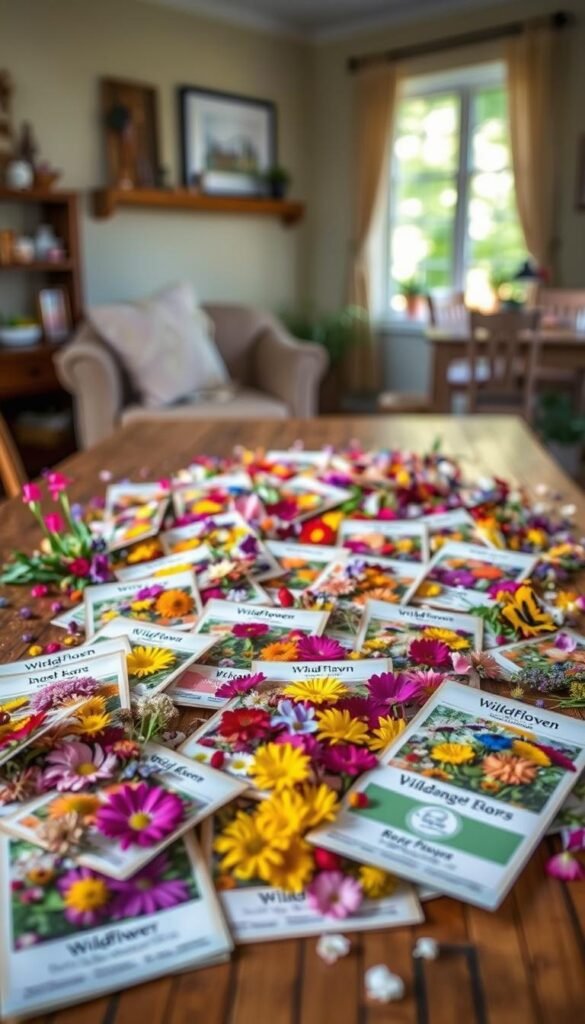
Transform your landscape into a thriving ecosystem by picking the right wildflower seed mixes. Start by decoding labels like a pro—botanical names reveal what’s truly in the package. Avoid imposters labeled as “wildflowers” that might actually be invasive plants.
Look for seed mixes combining annuals and perennials. Annuals like cosmos burst with color quickly, while perennials like coneflowers build lasting roots. This balance gives you first-year beauty and long-term growth.
Top-tier blends include early bloomers (think poppies), midsummer stars (like black-eyed Susans), and fall performers (goldenrod). This trio keeps your space vibrant for months, not weeks. Regional wildflower seeds adapt better to local soils and weather—Midwest natives handle frost better than generic blends.
Ask yourself:
- Does this seed mix match my soil type?
- Are any species known to crowd out natives?
- What’s the annual-to-perennial ratio?
Pre-made seed mixes save time, but custom blends let you spotlight favorite colors or support specific pollinators. Either way, quality matters—cheap options often contain filler grasses that compete with your blooms.
Evaluating Your Garden Conditions and Soil Preparation
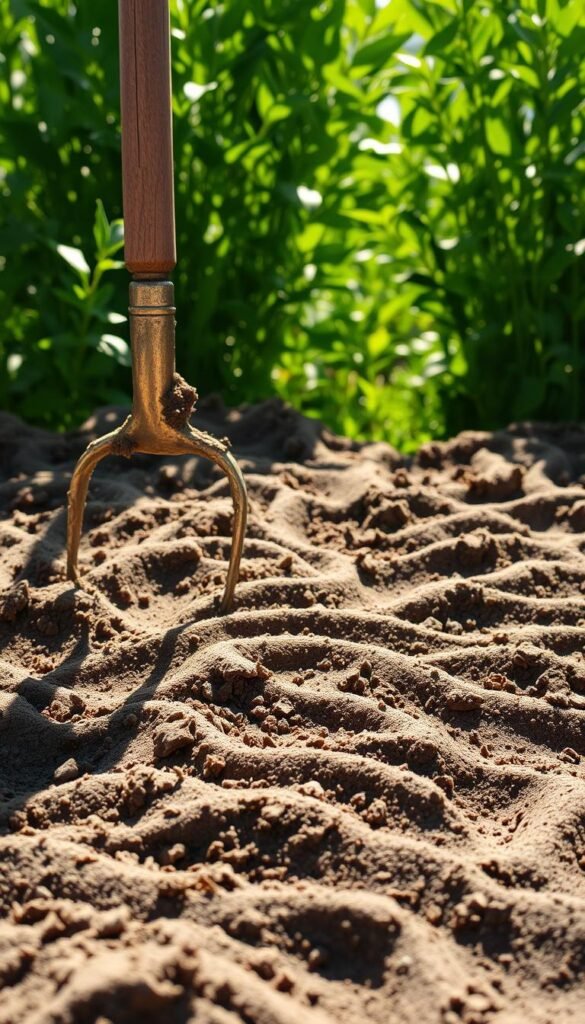
Your plot’s potential comes alive when you match nature’s rhythms. Start by observing patterns—track how light moves across your space and feel the earth beneath your feet. These clues shape your strategy for a thriving, low-effort habitat.
Assessing Sunlight and Soil Type
Watch your yard like a sundial. Most blooms need 8 hours of direct sun daily. Use a free app or simple notes to map shaded areas versus full sun zones. This determines where to plant sun-lovers like coreopsis or shade-tolerant asters.
Grab a handful of soil. Sandy types drain fast but need organic boosts. Clay holds moisture but may drown roots. Loamy soils? You’ve hit the jackpot! Test drainage by digging a 6-inch hole—fill it with water. If it drains in 2 hours, you’re golden.
| Soil Type | Wildflower Match | Action Needed |
|---|---|---|
| Sandy | Blanketflowers | Add compost |
| Clay | Milkweed | Mix in grit |
| Loamy | Coneflowers | None |
Amending Soils for Wildflower Growth
Here’s a twist: don’t fertilize. These plants thrive in lean ground. If your area has nutrient-rich topsoil, scrape some away. For depleted earth, mix in aged manure or leaf mold during fall—it breaks down by spring planting.
Clear existing grass completely. Try smothering weeds with cardboard for 8 weeks, or remove sod manually. This gives your seeds a fighting chance without chemical warfare.
Choosing the Perfect Wildflower Seed Mix
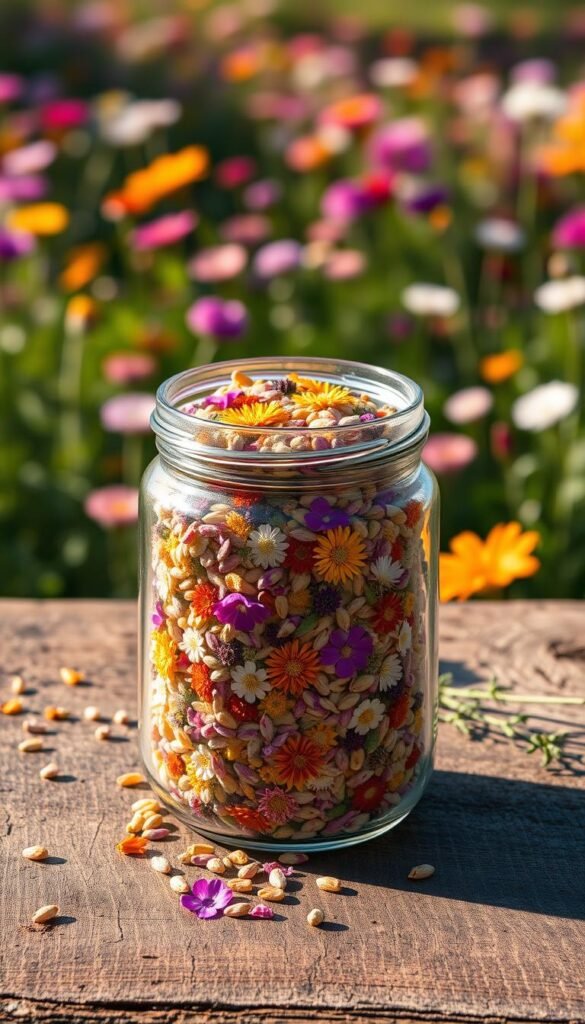
Finding the right blend for your space balances ecology with visual appeal. Start by weighing local biodiversity needs against your personal style preferences. The best combinations create habitats while reflecting your taste in colors and textures.
Local Champions vs. Global Beauties
Native wildflower species evolved alongside regional pollinators, offering perfect food and shelter matches. They establish faster in local soil and need minimal watering after year one. For example, purple coneflowers support 24 butterfly species in Midwest ecosystems.
Introduced varieties bring unique advantages. California poppies add fiery orange to New England meadows, while African daisies extend summer color in cooler zones. These non-native species rarely become invasive when chosen carefully.
| Feature | Native Species | Introduced Varieties |
|---|---|---|
| Water Needs | Low after establishment | Moderate |
| Pollinator Value | High | Variable |
| Bloom Duration | 2-4 weeks | 4-8 weeks |
Decoding Package Details
Quality seed mix labels tell you exactly what’s inside. Look for these key details:
- Scientific names (Echinacea purpurea vs. just “coneflower”)
- Percentage of filler materials like oats or ryegrass
- First-year bloomers versus multi-season performers
Premium blends specify light requirements matching your space. A mix labeled “partial shade” might contain woodland phlox and columbine. Check regional adaptability codes to avoid wildflowers that struggle in your climate.
Detailed Planting Techniques and Broadcasting Methods
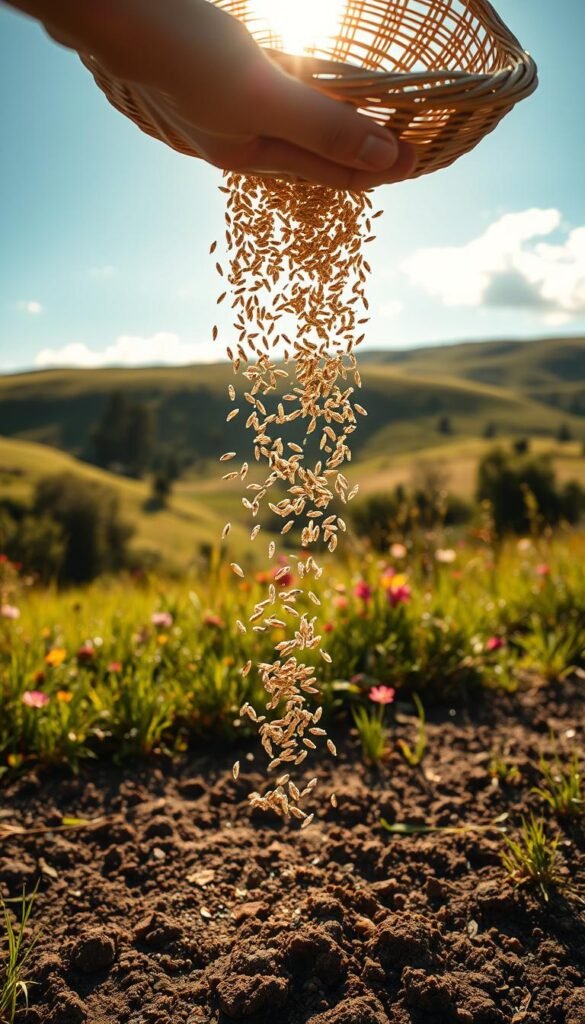
Successful growth begins with smart distribution. Unlike traditional gardening, broadcasting mimics nature’s random patterns while ensuring your seeds get the right start. Let’s break down the steps to turn your prepared ground into a thriving tapestry.
Broadcasting Seeds with Confidence
Divide your seed mix into two equal parts. Walk in one direction while scattering the first half, then cross perpendicularly with the rest. This crisscross method fills gaps naturally. For large areas, use a handheld spreader—but practice your throwing motion first to avoid clumps.
| Carrier Material | Ratio (Seed:Carrier) | Best For |
|---|---|---|
| Dry Sand | 1:8 | Visualizing coverage |
| Vermiculite | 1:5 | Moisture retention |
| Crushed Rice Hulls | 1:6 | Organic gardens |
Utilizing Carriers for Even Distribution
Mix seeds with dry sand—about a cup of sand per tablespoon of seed. The pale grains let you see where you’ve scattered. This trick prevents bare spots and stops hungry birds from spotting your planting efforts. Remember: no soil covering! Gently press them into the ground with your shoes instead.
Finish by spreading straw thinly over the areas. It shields against rain washouts and curious paws while letting sunlight through. Water lightly daily until sprouts appear—usually in 10-14 days. Soon, you’ll see why patience pays in nature’s timetable.
Timing Your Planting for a Vibrant Season
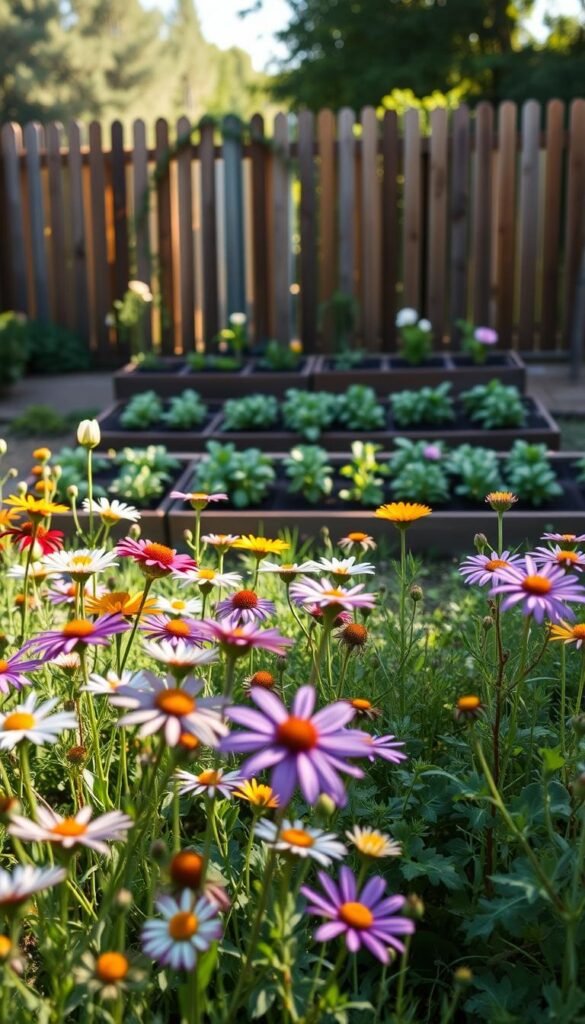
Nature’s clock ticks differently in every region. To create a thriving display, sync your planting schedule with local weather patterns and plant life cycles. The right moment depends on your area’s frost dates, rainfall trends, and temperature swings.
Best Months and Growing Season Considerations
March and April shine as prime months for sowing. Cool nights and gentle rains help seeds settle into soil without battling summer heat. This gives young plants months to build sturdy roots before winter arrives.
Fall offers a backup plan. September or October plantings use cooling temperatures to trigger natural stratification. However, early spring remains superior for most species—especially in zones with harsh winters.
| Planting Window | Pros | Cons |
|---|---|---|
| Early Spring | Full growing season | Risk of late frost |
| Late Fall | Natural cold treatment | Shorter establishment time |
Steer clear of summer sowing. High temperatures fry delicate sprouts, while dry spells demand constant watering. Check your regional planting calendar for precise dates. Southwest gardeners might start in February, while northerners wait until May.
Watch soil moisture like a hawk. Damp earth protects against wind theft and hungry birds. A light mulch layer preserves humidity without smothering your future blooms.
Caring for Your Wildflower Garden: Watering and Weed Management
Nurturing your blooming habitat requires smart care techniques that protect delicate sprouts while encouraging strong roots. Balancing moisture and competition ensures your vibrant display thrives year after year.
Effective Watering Strategies
Start with a gentle soak after sowing. Use a fine mist nozzle to keep seeds anchored in their perfect random pattern. Morning watering reduces evaporation, giving sprouts all day to drink.
Keep the top inch of soil moist during germination. Once shoots appear, water deeply but less often—this trains roots to seek moisture belowground. Native wildflowers often thrive on rainfall alone after their first summer.
Weed Control Without Harmful Chemicals
Outsmart invaders before planting. Let existing weeds sprout, then pull them—this clears the stage for your chosen blooms. A light straw mulch blocks new weed growth while letting sunlight through.
Spot-treat problem areas by hand. Young wildflowers have distinct leaf shapes compared to common grasses. When in doubt, wait a week—true blooms will show their unique features.
“Healthy wildflower patches naturally crowd out invaders by year two. Patience beats chemicals every time.”
Track growth patterns weekly. Dense clusters need thinning for airflow, while sparse zones can handle extra seeds. Your vigilance now means less work later as nature takes over.
Enhancing Biodiversity with Companion Plants and Grasses
Your green space becomes a living tapestry when paired with strategic partners. Native grasses and flowering plants work together to create habitats that support wildlife while adding visual depth. This synergy boosts resilience and keeps your landscape buzzing with activity.
Adding Edges with Ornamental Grasses
Tall, wispy grasses like switchgrass or little bluestem frame your blooms beautifully. These species prevent soil erosion and shelter ground-nesting bees. Plant them along borders or between wildflowers for natural windbreaks.
For best results, mix grasses with varying heights. Short prairie dropseed complements mid-sized blooms, while feather reed grass adds vertical interest. Their subtle textures let colorful plants shine while supporting diverse insects.
Attracting Beneficial Insects and Pollinators
Include nectar-rich species like milkweed or purple coneflower. These powerhouses feed butterflies and lure predatory insects that control pests. Pair them with beginner-friendly blooms like cosmos for continuous color.
Lavender and sunflowers work overtime—repelling unwanted bugs while feeding bees. Over time, these partnerships create a balanced ecosystem where every plant plays a role. Your efforts today become tomorrow’s thriving habitat.

